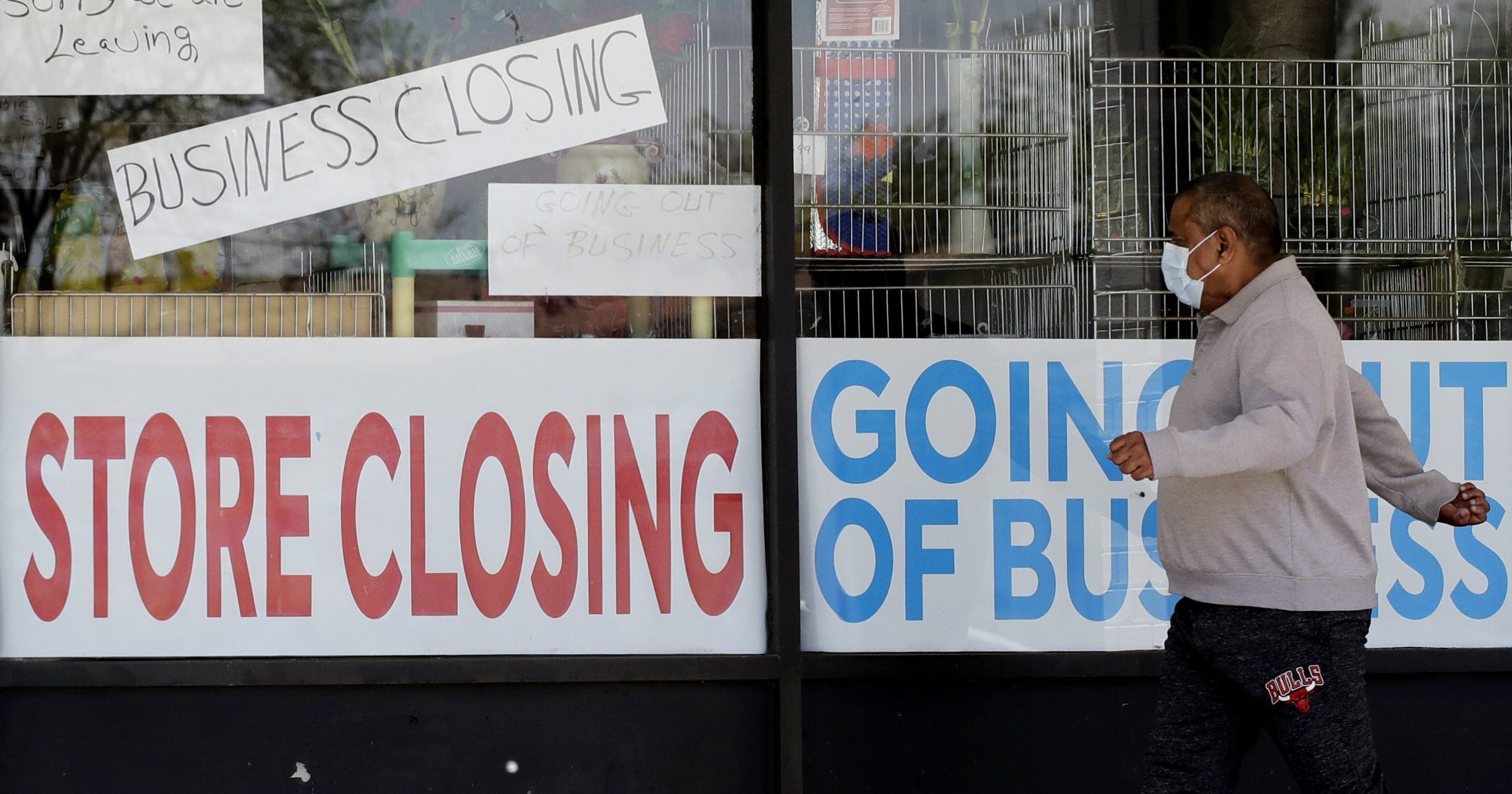
Gov't Employment Report To Detail Shutdown Devastation
The epic damage to America’s job market from the coronavirus shutdown will come into sharper focus Friday when the government releases the May employment report: Eight million more jobs are estimated to have been lost.
Unemployment could near 20 percent. And potentially fewer than half of all adults may be working.
Beneath the dismal figures will be signs that job cuts, severe as they are, are slowing as more businesses gradually or partially reopen. Still, the economy is mired in a recession, and any rebound in hiring will likely be painfully slow. Economists foresee unemployment remaining in double-digits through the November elections and into 2021.
If their forecast of 8 million jobs lost in May proves correct, it would come on top of April’s loss of 20.5 million jobs — the worst monthly loss on record — and bring total job cuts in the three months since the viral outbreak to nearly 30 million.
That’s more than three times the jobs lost in the 2008-09 Great Recession. And if the jobless rate does reach 20% for May, it would be double the worst level during that previous recession.
Overhanging the jobs picture is widespread uncertainty about how long the unemployed will remain out of work. Most of the layoffs in recent months were a direct result of the sudden shutdowns of businesses in response to the coronavirus pandemic. As many of these businesses reopen, at least partially, workers who had been laid off have held out hope of being rehired soon.
But some small employers might not reopen at all if the recession drags on much longer. And even once companies do reopen, their business may not fully return until Americans are confident they can shop, eat out and return to other previous habits.
For now, most people who have lost jobs still say they expect their unemployment to prove temporary.
Even if just one-third of the job losses turn out to be permanent, though, that would leave 10 million people who will need to find work. That is still more than all the jobs lost in the Great Recession.
A hole that size would take years to fill. Hiring will likely rebound over the summer and fall as states and cities further lift restrictions on economic activity. But it won’t match the huge job cuts this spring.
Oxford Economics, a consulting firm, estimates that the economy will regain 17 million jobs by year’s end, a huge increase by historic standards. But that would make up for barely more than half the losses.
Seth Carpenter, an economist at UBS, said that after an initial bounce-back, future hiring will likely be slow.
Adam Ozimek, chief economist at Upwork, notes that the fastest year for job growth since the Great Recession was 2014 with 3 million jobs. Even at that pace, it would take at least several years to return to the pre-shutdown job market.
Since mid-March, more than 40 million Americans have applied for unemployment benefits.
But that doesn’t mean that that many people are still unemployed. The figure likely includes some duplicate filings: In some states, self-employed and “gig” workers applied under their regular state unemployment systems before they were able to file under a new federal program that has made them eligible for benefits for the first time.
In addition, some people who lost jobs early and applied for unemployment aid have been rehired. That, along with slowing layoffs, helps explain why the net job loss for May is expected to be far less than April’s. Goldman Sachs estimates that up to 3 million people who were initially laid off have already been rehired.
Weekly surveys of small businesses by the Census Bureau show an uptick in the number of companies that are hiring and providing more hours of work, though the gains are slight.
In mid-May, according to the most recent data available, nearly 10 percent of small companies surveyed said they had added jobs in the past week, and 12 percent said they had added hours. Both figures were roughly double their level three weeks earlier.
Still, 16 percent said they had cut jobs, and a third said they were still cutting hours — figures that are consistent with ongoing but smaller job cuts in May.
Three-quarters of states have allowed dining-in services to resume at restaurants, though most are still restricting total capacity. Many states have reopened gyms, hair salons and movie theaters. But a meaningful rebound will require greater public willingness to return to their old activities.
Adam Kamins, senior regional economist at Moodys Analytics, said this probably won’t happen until a vaccine is available or testing expands significantly.
Civil unrest in dozens of cities in response to the killing of George Floyd in Minneapolis may also weigh on the economy in the short term, though analysts for now expect the consequences to be limited. Kamins said the economic damage was likely mitigated by the fact that so much activity is still closed down in large cities like New York and Washington.
Data from the restaurant reservation app OpenTable showed a slight drop in dine-in activity on Monday and Tuesday that might have been caused by the protests.
“It certainly doesn’t help to have this layer of uncertainty added on,” Kamins said.
The Western Journal has reviewed this Associated Press story and may have altered it prior to publication to ensure that it meets our editorial standards.
Truth and Accuracy
We are committed to truth and accuracy in all of our journalism. Read our editorial standards.
Advertise with The Western Journal and reach millions of highly engaged readers, while supporting our work. Advertise Today.












